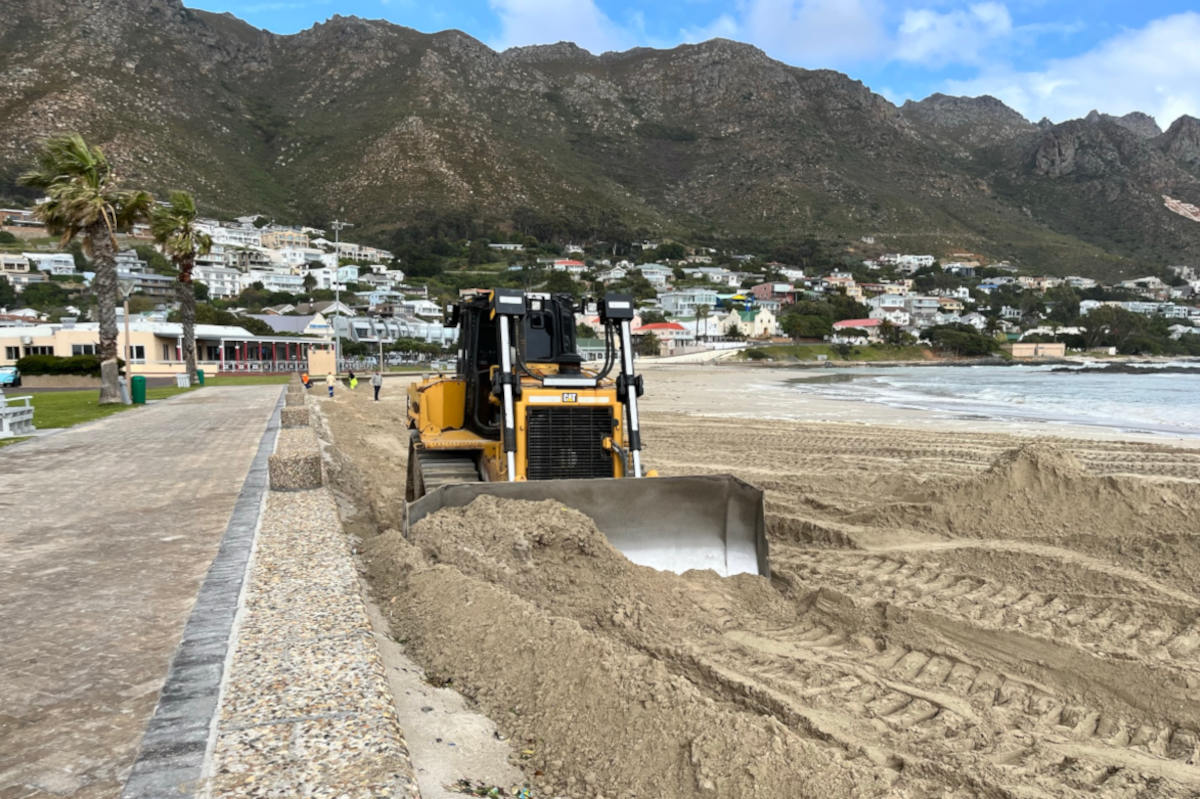
Beach lowering has begun across Cape Town: Why is the city pushing sand back into the sea?
As work begins at four key beaches, this coastal management practice reveals a delicate balance between infrastructure and nature.

With Capetonians in a fuss about the recently announced beach lowering programme, many are asking the obvious question: Why are bulldozers pushing sand back into the ocean at Fish Hoek, Muizenberg, Gordon’s Bay, and Bikini Beach?
Aren’t we supposed to protect our beaches, not remove sand from them?
The confusion is understandable.
As the annual programme kicked off this October, the sight of heavy machinery on beloved beaches naturally raises concerns.
But the answer lies in understanding Cape Town’s unique coastal challenge: the relentless power of wind-blown sand during the Mother City’s notorious summer winds.
The Problem
Cape Town’s coastal areas exist in what officials call “highly altered coastal systems”: urban coastlines where infrastructure sits close to dynamic natural forces.
During winter, sand accumulates naturally.
But when summer arrives with the infamous southeaster winds, this sand becomes a moving threat.
“The lowering of beach sand levels enables greater areas of the beach to become wet during high tides, therefore limiting the potential for wind-blown sand to inundate adjacent roads and infrastructure,” explains Alderman Eddie Andrews, the City’s Deputy Mayor.
Without intervention, wind-blown sand can smother parking areas, block stormwater outlets, and threaten electrical infrastructure.
At Hout Bay, a giant dune once endangered key facilities.
The Science
Beach lowering is different from simply removing sand.
The City pushes sand from the upper beach to the low-water mark, where wave action transports it back into the coastal circulation system.
“Beach lowering mimics a natural scour event which is common on our shorelines, and puts the sand back into the sea where it returns to circulation within the oceanic system,” the City notes.
By lowering the beach profile, more surface area becomes wet during high tides.
Wet sand is significantly heavier than dry sand and far less susceptible to wind transport, effectively anchoring it in place during the windy season.
Environmental Balance
Beach manipulation raises important environmental questions. Research worldwide has identified both benefits and concerns.
On the positive side, the practice maintains natural sediment circulation, protects infrastructure without hard structures like seawalls, preserves beach access and tourism, and represents a reversible intervention.
Potential concerns include temporary disruption to beach organisms, short-term water turbidity during work, and disturbance to shorebirds during operations.
Cape Town’s approach minimises impacts by scheduling work between 1 October and 8 November, before peak summer season and bird nesting periods.
Critically, sand isn’t removed from the coastal system entirely but returned to natural ocean circulation.
Why Not Just Build Walls?
Hard structures like seawalls might seem simpler, but they accelerate erosion on adjacent properties, reflect wave energy, permanently alter natural processes, and prove inflexible as sea levels rise.
Beach lowering represents a “soft” engineering approach that preserves the beach as a natural, dynamic feature while managing wind-blown sand.
Looking Forward
As sea levels rise and extreme weather intensifies, Cape Town’s approach of minimal intervention offers lessons for coastal cities worldwide.
“Our intention is to intervene as little as possible,” says Gregg Oelofse, head of the City’s Environmental Policy and Strategy.
“We have learnt that the more you intervene, the more you mess the situation up.”
The mechanical work runs through early November, completing before summer winds intensify.
Beaches remain accessible, though visitors should stay clear of machinery. For most beachgoers, results will be largely invisible. Beaches won’t look dramatically different, they’ll simply function better with less sand blowing onto infrastructure.
The sand being pushed back into the sea isn’t wasted. It’s being returned to its natural home, to be redistributed by the forces that brought it ashore.
Sometimes the best solution is working with nature rather than against it.
A Sandy Perspective
For South Africans living abroad, particularly in the UK, Cape Town’s beach challenges offer an interesting contrast.
British beaches are often rocky affairs, frequently backed by concrete seawalls built to hold back the sea.
When the weather is actually good enough for a beach day, you’re more likely to find pebbles than sand.
Cape Town’s problem isn’t a lack of beaches but managing an abundance of sand that wants to go where it shouldn’t.
It’s a uniquely South African coastal challenge, and one that makes those sprawling False Bay beaches all the more precious.
Beach lowering runs from 1 October to 8 November 2025, weather dependent. For updates, visit the City of Cape Town’s official website.
